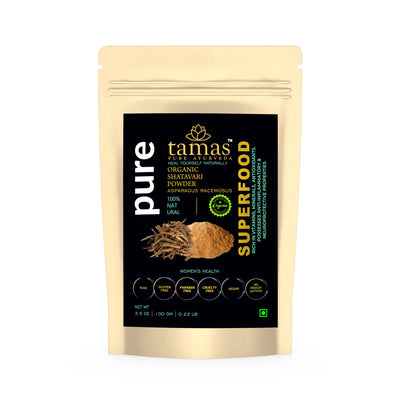
Chandanasavam
Ayurvedic Medicine for UTI
Kerala Ayurveda's Chandanasavam is an ayurvedic medicine for muscle strength and is one of the most effective prescriptions for urinary tract infection treatment. It is known as ayurvedic medicine for strength and is a potent herbal formula that is used to effectively treat urinary and urogenital disorders. Chandanasavam is an ayurvedic treatment for UTI infection and contains 5-10% of self-generated alcohol. Chandanasavam has a cooling effect, balances body heat and has a wide range of antimicrobial and antibacterial properties.
The key benefits of Chandanasavam are:
- It is an antibacterial medicine and acts against bacteria to clear up the urinary tract infection.
- It is a UTI medicine and also helps to improve digestion power and enhance the functions of the stomach and the intestines. It also boosts the production of digestive juices in the organs.
- It is an Ayurvedic medicine for urine flow and also helps to prevent stone formation.
- It is a popular urine infection medicine and also aids in dissolving stones in the kidneys or bladder.
- It is a diuretic and helps in flushing out the infection-causing germs and other toxic substances from the body.
- It is an antioxidant.
Ingredients
- Chandanasavam contains several herbs especially Chandana (sandalwood) and Asava (sweetening agent) which are the primary ingredients. Other ingredients include:
- Safed Chandan - White Sandalwood (Heart Wood)
- Padmaka - Wild Himalayan Cherry (Heart Wood)
- Lal Chandan - Red Sandalwood (Heart Wood)
- Gambhari - Beech Wood (Stem Bark and Root)
- Neel Kamal - Blue Water Lily (Flower)
- Patola - Pointed Gourd (Leaf)
- Amratvark - Mango (Bark)
- Pippali - Long Pepper (Fruit)
- Draksha - Dry Grapes (Fruit)
- Dhataki - Fire Flame Bush (Flower)
- Patha - Pata (Root)
- Chirata (Root)
- Netrabala - Fragrant Sticky Mellow
- Nagarmotha - Nut Grass
- Priyangu - Beautyberry
- Lodhra - Symplocos Tree
- Manjistha - Indian Madder
- Bargard - Banyan
- Mochras - Silk Cotton
- Gur - Jaggery
- Sharkara - Sugar Candy
- Water
An Ayurvedic Perspective
Ayurveda is an ancient healing system that originated in India over 5000 years ago. With an emphasis on total wellness, the art, and science of Ayurveda work to harmonize an individual's internal and external worlds. Ayurveda groups the five elements (ether, air, fire, water, and earth) into three basic types of energy and functional principles or life forces, called doshas: Vata, Kapha, and Pitta. Although there is a unique mix of the three doshas, every individual will have one dominant dosha.
In Ayurveda, the balance of an individual's doshas is thought to explain his or her individual differences, behaviors, and the likelihood of illness. An imbalanced dosha is believed to interrupt the natural flow of vital energy or prana. This disrupted energy flow is thought to impair digestion and allow the build-up of body waste, or ama, which further impairs energy and digestion.
In Ayurveda, a urinary tract infection is considered as Mutrakrichhra and is caused by the aggravation of pitta dosha mainly. Pitta symbolizes heat or fire and so a diet and lifestyle that aggravates pitta produce an imbalance in the body’s natural ratio of Vata, Pitta, and Kapha. According to Ayurveda, vitiation of all doshas is related to UTI in one way or the other. Ayurvedic concept of pathogenesis lies in understanding the doshas and sub doshas in the manifestation of diseases.
Vitiating factors leading to a UTI
- Consuming spicy, salty, and hot foods
- Consuming alcohol in excess
- Suppressing the natural urge to urinate
- Prolonged exposure to heat
- Feelings of anger, impatience, and jealousy
- Hazardous working conditions including around fire, chemicals, and toxic fumes
- Not consuming sufficient amounts of water
An Overview
A urinary tract infection (UTI) is an infection involving the kidneys, ureters, bladder, or urethra. The urinary tract can be divided into the upper urinary tract and the lower urinary tract.
- The upper urinary tract consists of the kidneys and the ureters. Infection in the upper urinary tract generally affects the kidneys (pyelonephritis), which can cause fever, chills, nausea, vomiting, and other severe symptoms.
-
The lower urinary tract consists of the bladder and the urethra. Infection in the lower urinary tract can affect the urethra (urethritis) or the bladder (cystitis).
Urine passes through the kidneys, ureters, bladder, and urethra before being eliminated from the body, and any part of this system can become infected. However, the most common UTIs occur mainly in women and affect the bladder and urethra. There are two categories of urinary tract infections: simple and complicated
- Simple UTIs occur in healthy people with normal urinary tracts. This type of UTI occurs most frequently in women and is also known as cystitis.
- Complicated UTIs occur in individuals with abnormal urinary tracts or when underlying medical conditions make treatment failure more likely. Men and children are more likely to have this type of UTI.
There are two main types of urinary tract infections:
- Infection of the urethra (urethritis) can occur when bacteria spread from the anus to the urethra. Also, because the female urethra is close to the vagina, sexually transmitted infections, such as herpes, gonorrhea, chlamydia, and mycoplasma, can cause urethritis.
- Infection of the bladder (cystitis) is usually caused by Escherichia coli (E. coli), a type of bacteria commonly found in the gastrointestinal (GI) tract. However, sometimes other bacteria are responsible. All women are at risk of cystitis because of their anatomy — specifically, the short distance from the urethra to the anus and the urethral opening to the bladder.
Causes and symptoms of a UTI
Urine is normally sterile. An infection occurs when bacteria gets into the urine and begins to grow. The bacterial infection usually starts at the opening of the urethra where the urine leaves the body and moves upward into the urinary tract.
- The most common cause of UTI is infection with Escherichia coli, a type of bacterium that normally inhabits the bowel, where it is relatively harmless. These organisms become a cause of UTI only when they enter the urethra.
- The second most common bacterial cause of UTI is Staphylococcus saprophyticus, which normally occurs on the skin of some humans.
- There are other rare causes of UTI which include bacteria and fungal organisms. In addition, threadworms, flukes, and other parasites, as well as some viruses have been identified as infrequent causes of UTIs.
Depending on the location of the UTI, an individual may experience one or more of these symptoms:
- Pain or burning during urination
- Fever and a feeling of being tired
- An urge to urinate frequently
- Urine that smells and/or looks cloudy or reddish
- Pain in the back or on the side below the ribs



















